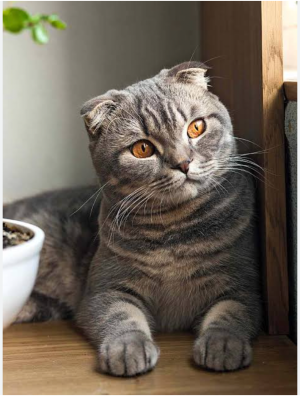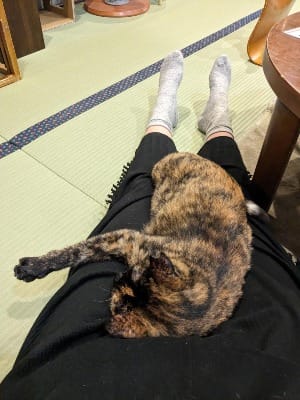Animal Tourism
Mindset of Change
Wild Swans by Christopher Tin, VOCES8, Royal Philharmonic Orchestra, Barnaby Smith
There are many reasons to travel - for relaxation, for a change of scene, to learn about new cultures. For nature and animal lovers, seeing and interacting with new environments, including flora and fauna, is often a draw. This type of attraction includes things like:
- safaris
- elephant or camel rides
- petting zoos
- animal cafes
- big cat treks
- snorkeling
- conventional zoos
Traveling in Japan recently, I missed my cats and decided to checkout a famous Japanese attraction - a cat cafe. However, almost as soon as I walked in the door, my animal ethics spidey sense went off. First, many of the cats were popular "online" breeds like munchkins and Bengals, and frankly looked inbred. Second, the few cats that looked more normal had their ears cropped to make them look like Scottish Folds, when they clearly were not. Third, most of the cats were hiding in cat trees - away from the visitors - and did not want to interact. Fourth, the attendants kept taking cats out of hiding places or luring them out with excessive amounts of treats. Most of the cats looked overweight.

After some quick internet research, I discovered that the cafe was a chain called MOCHA that had been shut down a few years prior for animal ethics violations. While they had supposedly revamped their operations and reopened (indeed I did have to sign some wavers before entering), it was clear to me that they were being run like a business and not by cat lovers. Inbreeding for popular "cute" (kawaii) varieties, and doing cosmetic surgeries like ear and tail cropping, is not illegal and standard enough to skirt ethics violations. Not allowing visitors to chase or stress the cats had been a condition of their reopening, and the cats did have spaces they could escape. However, while this condition had technically been met, almost all the cats trying to hide indicates they were probably over-socialized and/or not screened for social personalities. Basically, it was not an ethical enterprise and I was sad to have given them my money.
The mistake I made is a common one - I didn't do my research. Since I love animals, I made the false assumption that anyone that runs a cat cafe must love animals too (and treat them well). I had read about good cat cafes in Japan, and just assumed that was the norm. It is not. And yet! There are good cat cafes in Japan and they do fantastic work that I most definitely do want to support. I made sure to visit one in remedy of my previous error (after doing proper research this time).
Neko Republic in Osaka (neko means cat in Japanese) is a cat shelter that takes in street cats, provides vet care, and tries to get them adopted. It's not a place for tourists to just take pictures. It's part of the community and is actively trying to encourage an 'adopt don't shop' attitude. As soon as I entered Neko Republic, I knew it was different. While it was a lovely place to have a cup of coffee, it was clear the space had not been designed for Instagram. It had been designed for cats.
The person at the front desk led me through a similar set of wavers, then gave me a laminated sheet with pictures of all the cats and visual indicators of how well socialized they were. He explained that some of the cats were very social and cuddly, but some were not yet. They were in the process of being socialized and they rotated through the visitor space. Indeed, a cuddly cat immediately came and climbed on my lap, claiming me for the rest of my visit. Several others came and went, and their behavior was markedly different from the MOCHA cafe. Tails up, expressions curious, arrogance in full display - the way a cat looks when it feels confident and safe in its environment.

Right before I left, a young man came in, clearly not familiar with cats, but fascinated. The front desk fellow took him around, explaining cat behavior and body language in Japanese, and when I got up, the cat on my lap immediately went for the newcomer. I like to think he adopted her.
Cat cafes are just one example of animal cafes in Japan, and not the worst concept unfortunately. Owl cafes have been popular since Harry Potter, and I too love Hedwig. But taking a moment to think about it, it's clearly not a good idea for the animals. Owls are solitary nocturnal creatures. Being handled in daylight by numerous strangers would clearly not be in their best interest. Same with hedgehog cafes. Otter cafes are perhaps less obviously terrible - otters are generally pretty social - but I am extremely skeptical. Japanese river otters went extinct in 2012 and its sea otters are extremely endangered. Sanctuaries may need to rescue wild animals, and maybe some cannot return to the wild. Lord knows, rehabilitation facilities and animal research always needs funding. But there is a wide gap between trying to educate the public in order to support a sanctuary, and handling otters in front of 100s of strangers on the street in Harajuku.
This is the dilemma. There are lots animal organizations across the world who do genuinely good work and are worthy of support. There are also lots of organizations that exploit animals. For these latter organizations, at best, animal welfare is not prioritized. At worst, animals are actively abused. Without doing research on the specific organization, it is impossible to tell.
Here are some things to watch out for:
- If you are allowed to handle the animals, especially a non-pet animal like a tiger or a sloth, it's probably not ethical. Wild animals should not be handled by strange humans.
- Occasionally, at a well run zoo or sanctuary, there may be debatably acceptable exceptions. For example, in Costa Rica, I saw a very qualified keeper have a monkey run across the extended arms of the crowd. This was not a guaranteed experience for visitors and the monkeys were alternated. They made a specific point of saying that it was a very compelling experience for many young people and did not harm the monkey (which was a lifelong zoo resident). They felt the educational experience was worth it.
- If you are allowed to ride the animal, the animal has been 'broken' to be ridden. Methods of doing this vary across the world and by the animal. In southeast Asia, for example, the method of breaking elephants is often very cruel.
- In general, the treatment of working animals varies across the world and by owner. Very often, in poorer countries, working animals are not treated well. That said, in poorer countries, people often have very hard lives.
- If the goal of the activity is to view or watch animals, pay attention to how intrusive the method is. Wild animals already have so little natural habitat left. As a human invading this minimal space even further, its important to be as respectful and non-invasive as possible.
- In general, try to avoid going with large crowds on these types of trips. First, you will probably see more animals. Second, its easier to be unobtrusive in wild habitats when there aren't so many people.
Now you might ask: should I even try to see animals at all? This is a tough question and each person must evaluate that for themselves. In my opinion, yes.
Many countries and communities are only incentivized to protect animals and natural habitats through eco-tourism. I also think its personally impactful to experience animals in person. We may be the last generation to see many of these animals in the wild. If we want to save them, we need to be personally inspired.
Before you go on a trip, if you're eager to see animals, I recommend you do some research ahead of time and find good places to support. I'm always happy to answer questions too! Happy traveling!
If you're ever in Tokyo or Osaka, check out Neko Republic! They even have a cat hostel.
